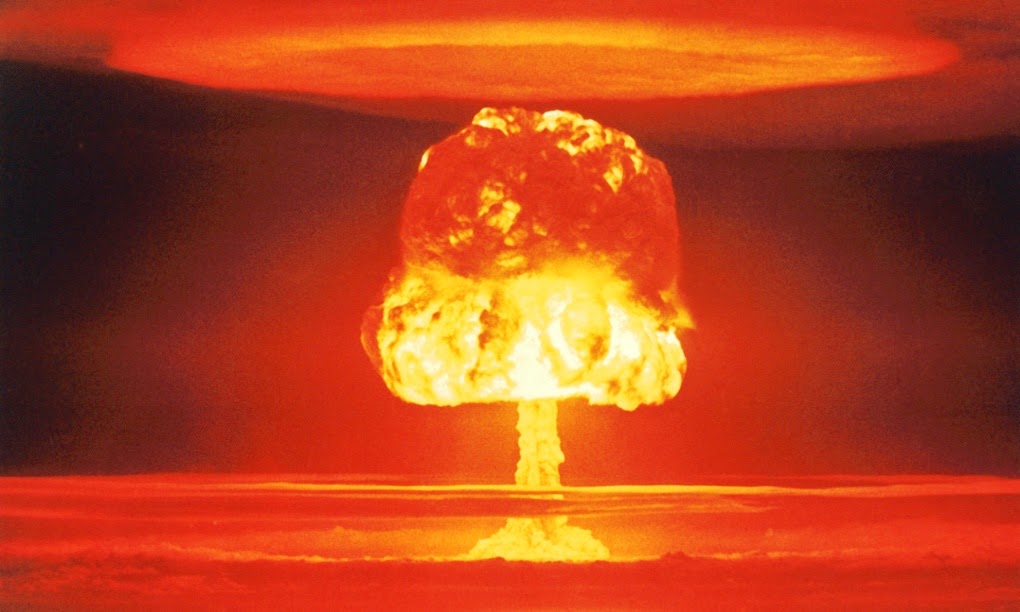 |
| Nuclear Explosion over Bikini Atoll, Marshall Islands on March 26, 1954.
Photograph: Corbis | doi:10.1038/nature14258
|
Time is divided by geologists according to marked shifts in Earth’s state. Recent global environmental changes suggest that Earth may have entered a new human-dominated geological epoch, the Anthropocene. Here we review the historical genesis of the idea and assess anthropogenic signatures in the geological record against the formal requirements for the recognition of a new epoch. The evidence suggests that of the various proposed dates two do appear to conform to the criteria to mark the beginning of the Anthropocene: 1610 and 1964. The formal establishment of an Anthropocene Epoch would mark a fundamental change in the relationship between humans and the Earth system.
.......
 |
| (a) Current boundary between the Pleistocene and Holocene (dashed line), with global temperature (blue), and atmospheric CO2 (red). (b) Early Anthropogenic methane GSSP suggested boundary (dashed line), atmospheric methane (in parts per billion, p.p.b.) (green), global temperature (blue), and atmospheric CO2 (red). (c) Orbis GSSP suggested boundary (dashed line), atmospheric CO2 (blue), and global temperature (red). (d) Bomb GSSP suggested boundary (dashed line), atmospheric radiocarbon from annual tree-rings (black), atmospheric CO2 (red), and global temperature (blue). Illustration: Simon L. Lews & Mark A. Maslin doi:10.1038/nature14258 |
Simon L. Lews & Mark A. Maslin. 2015. Defining the Anthropocene. Nature. 519: 171–180 doi:10.1038/nature14258 | 10.1038/nature.2015.16739
The Human Epoch: when did it start? | @BobOHara & @GrrlScientist http://gu.com/p/46h8b/stw
New study argues the Anthropocene began in 1610 http://news.mongabay.com/2015/0311-hance-anthropocene-1610.html via @mongabay
Epoch-defining study pinpoints when humans came to dominate planet Earth http://phy.so/345298759 via @physorg_com
